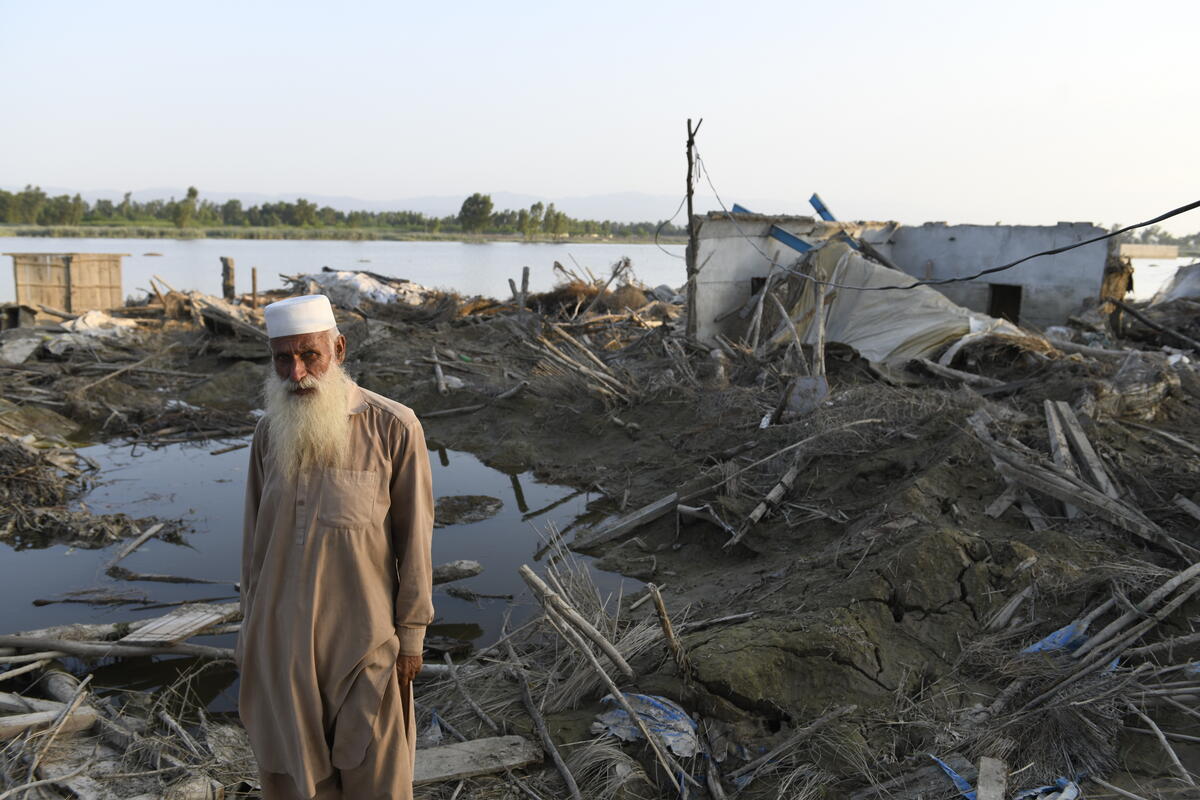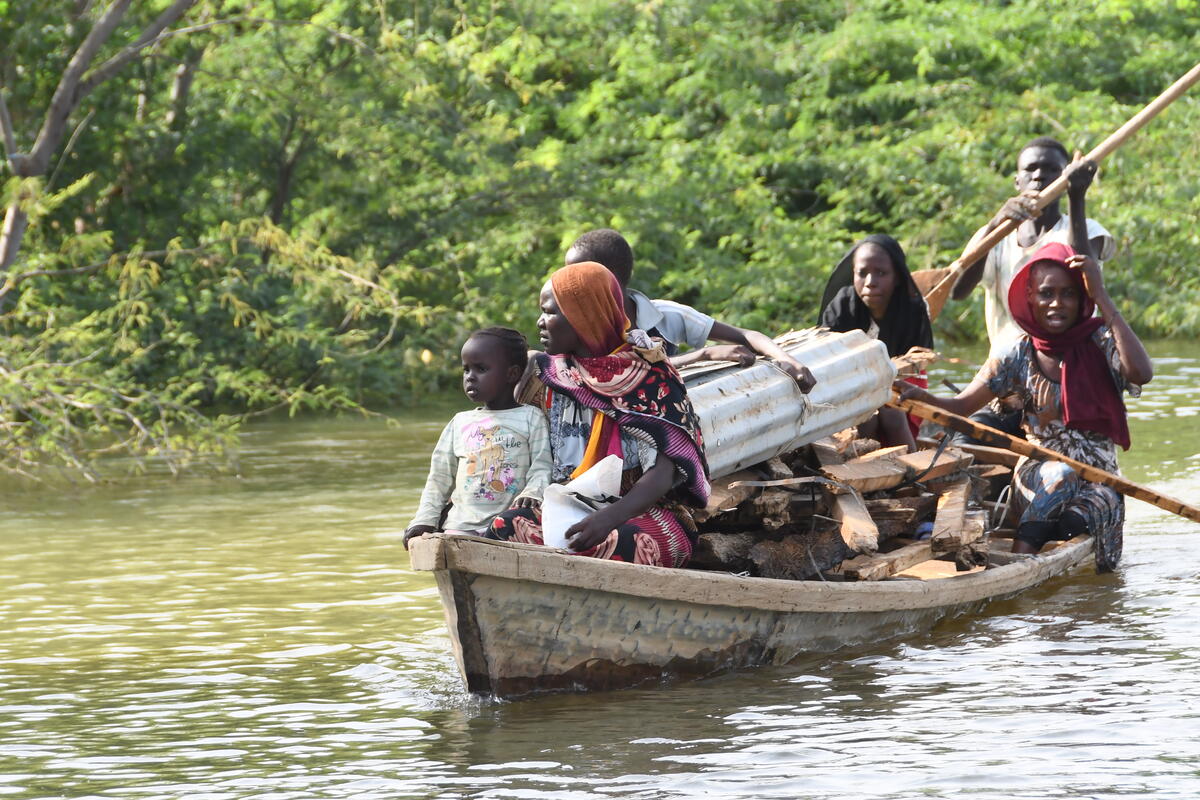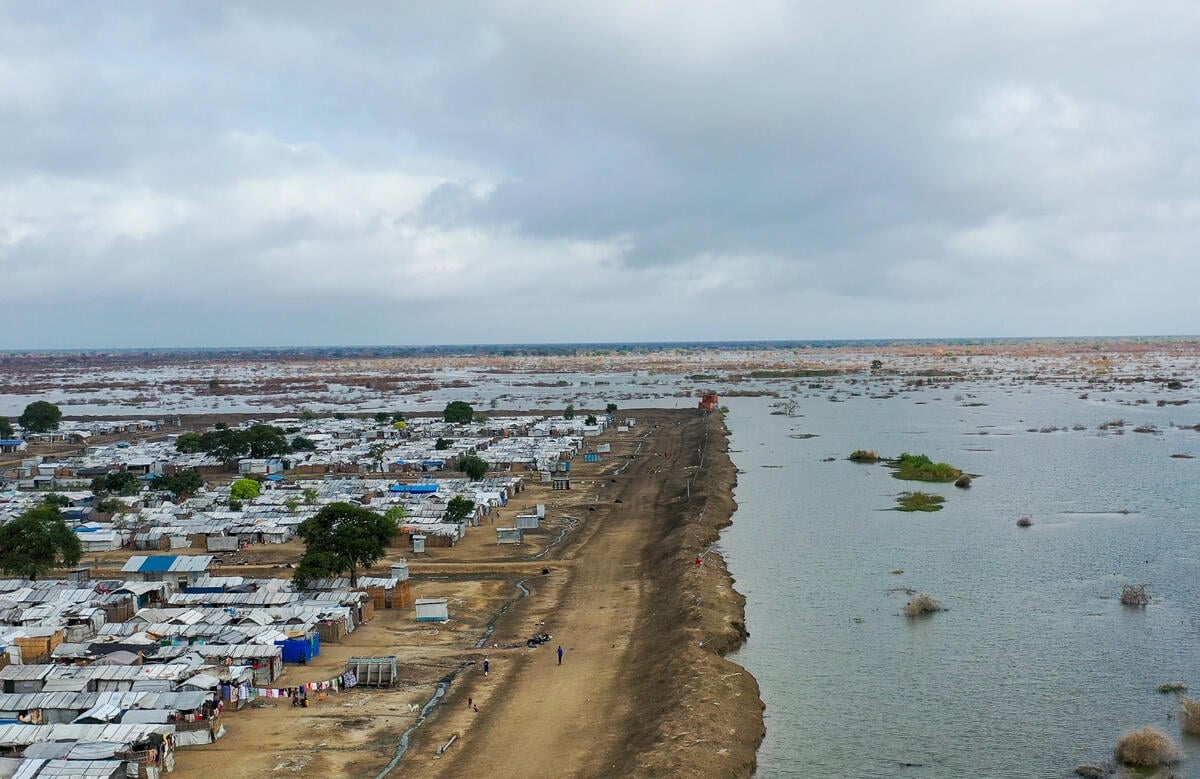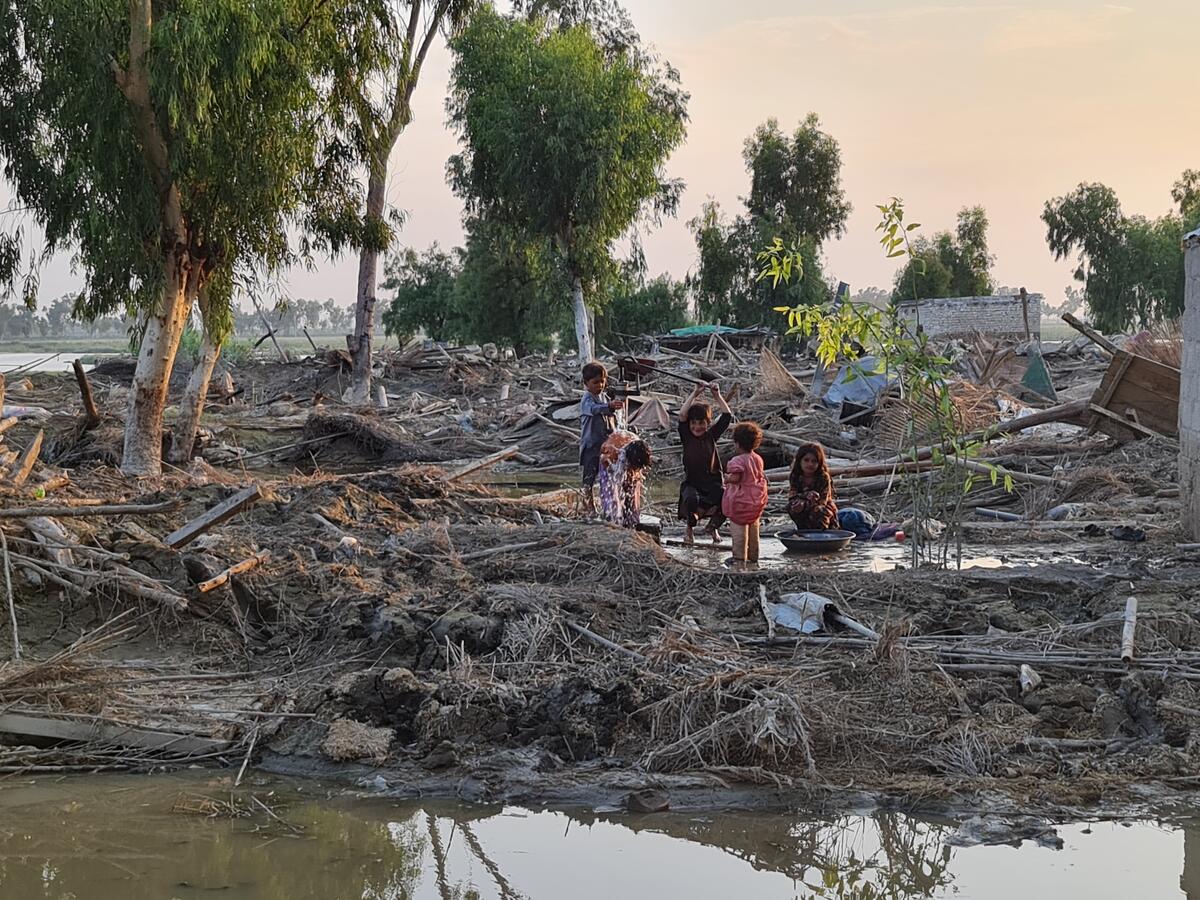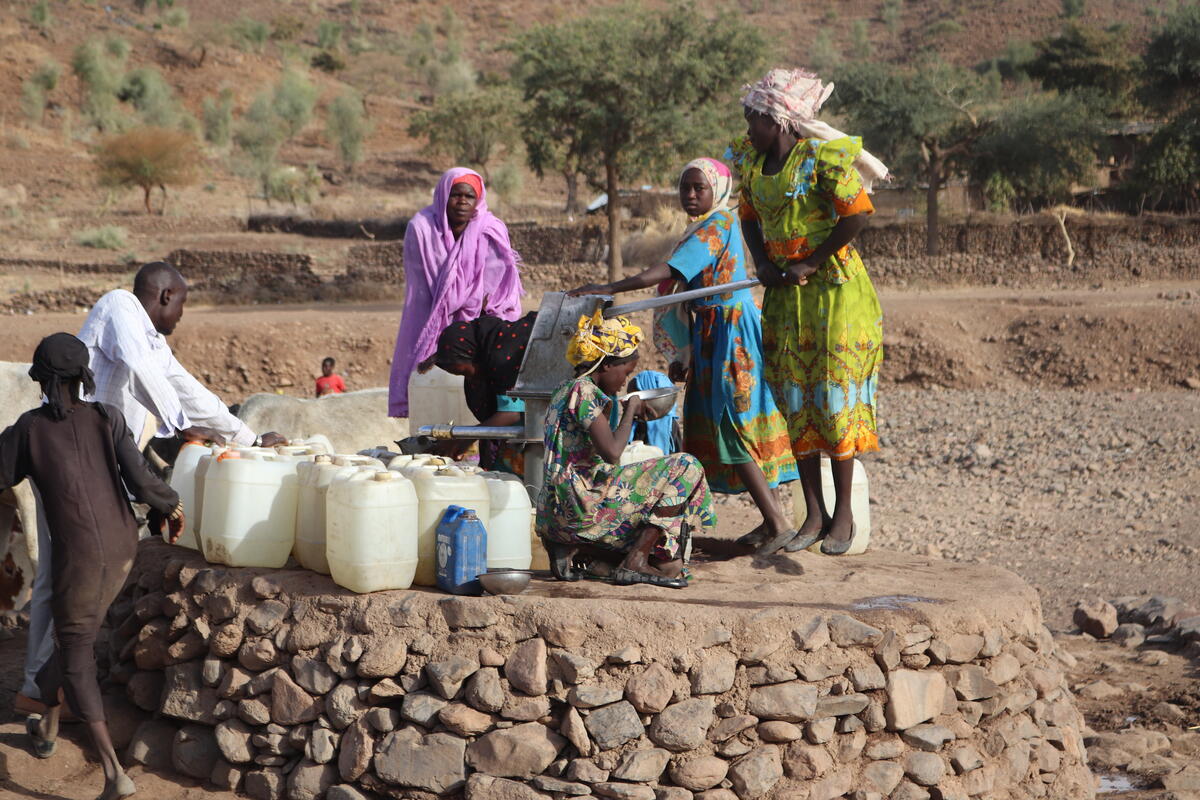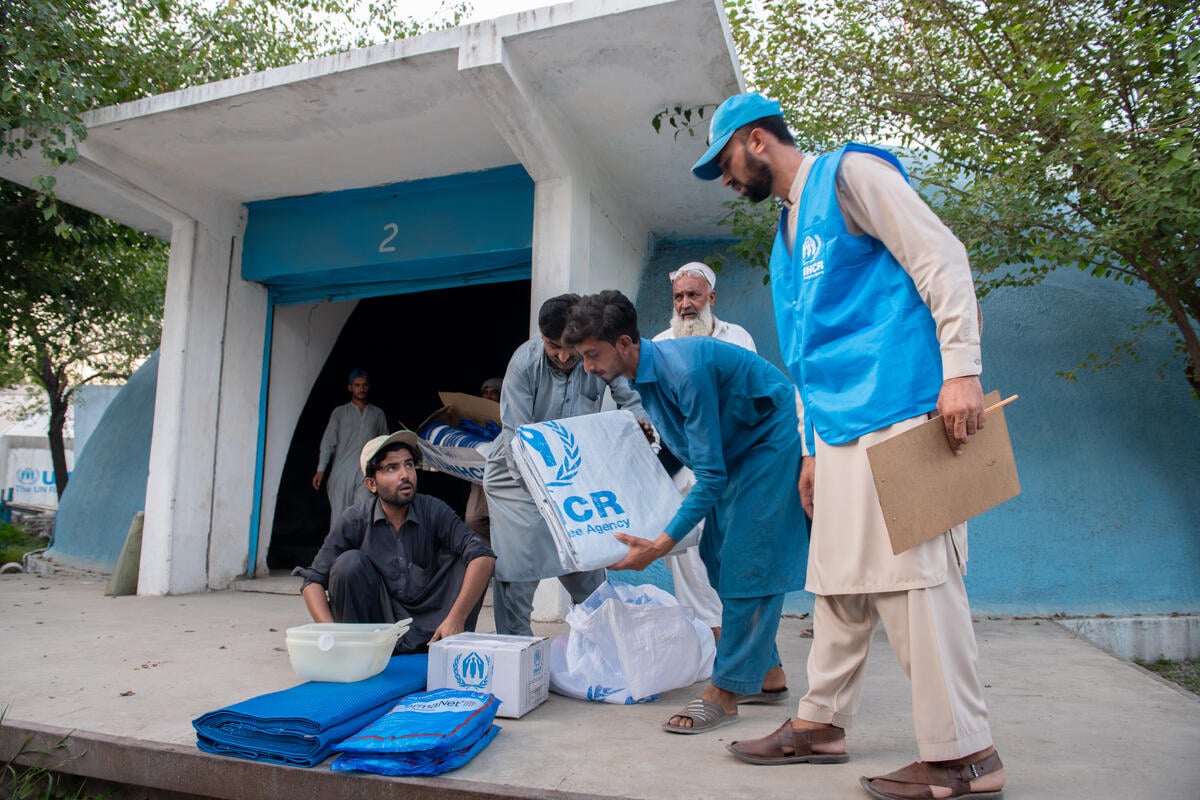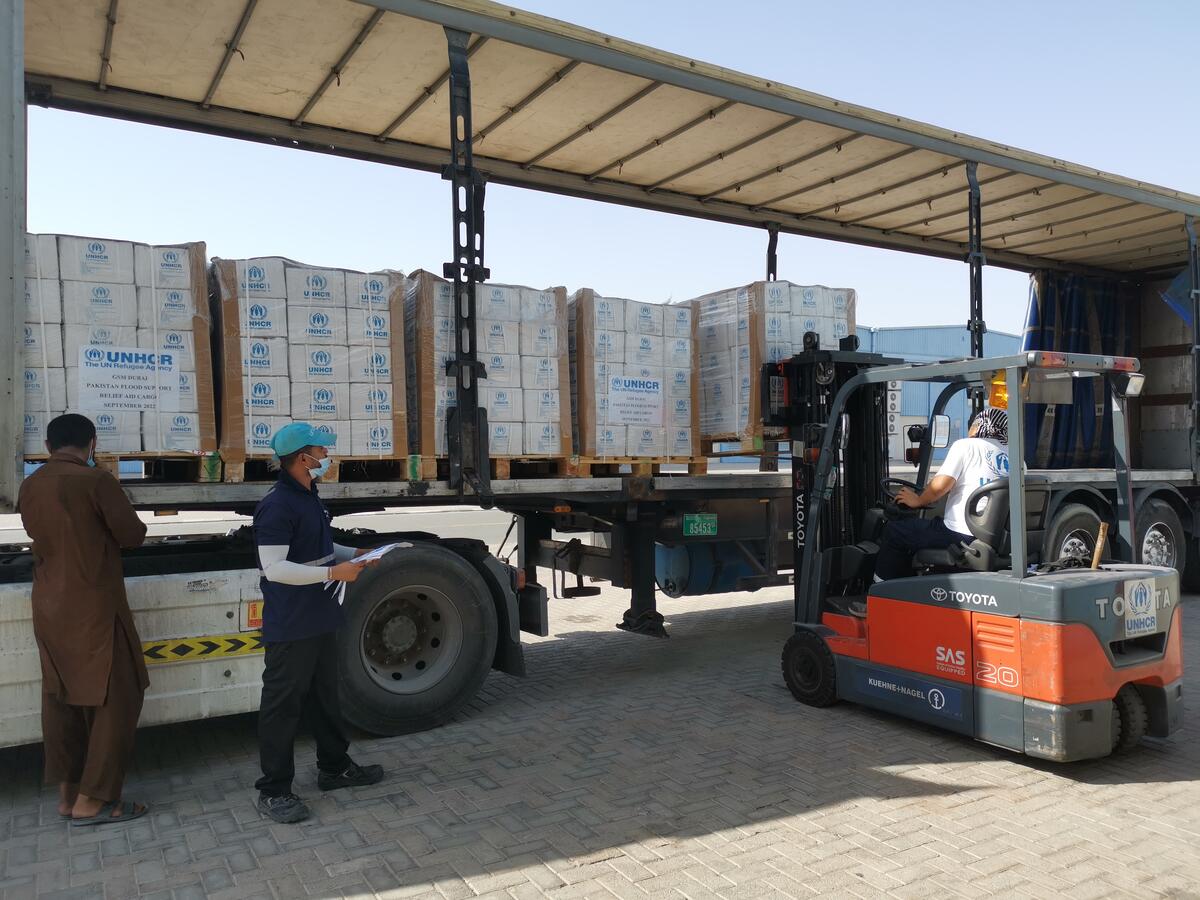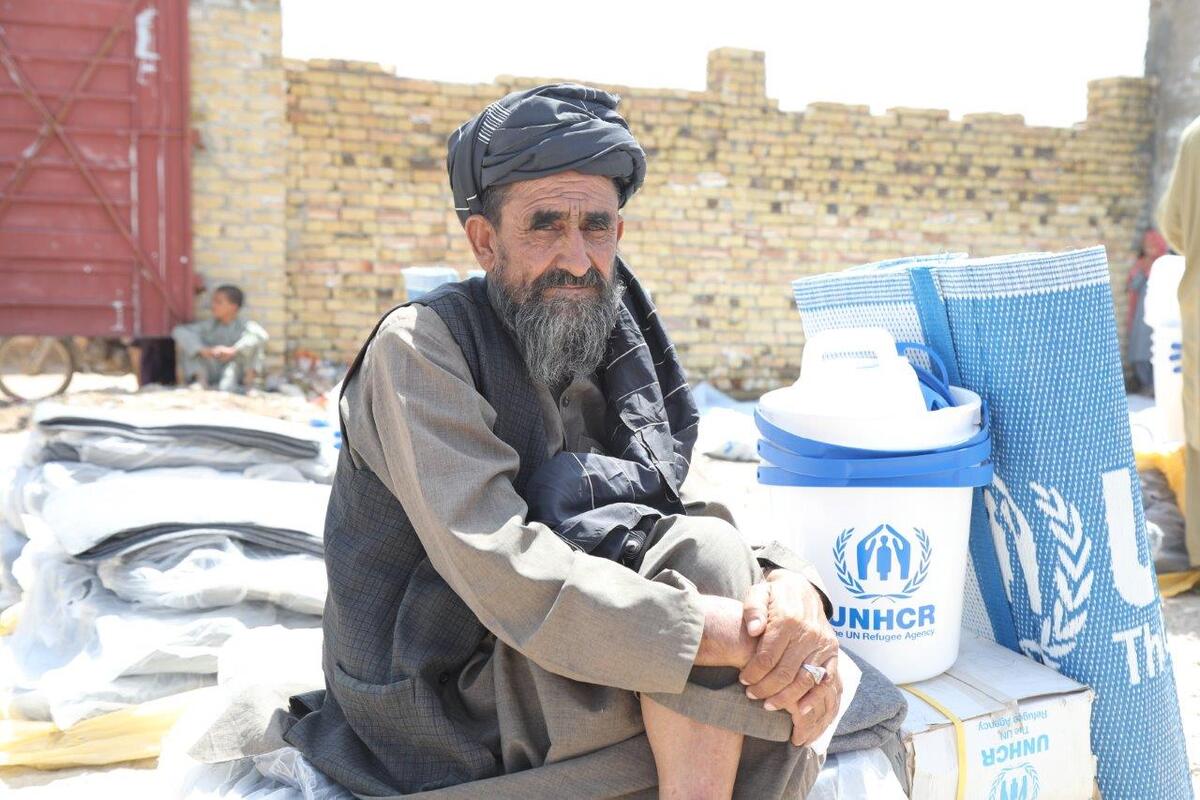Heavy rains hit thousands of displaced Somalis in region
Heavy rains hit thousands of displaced Somalis in region
Thousands of displaced Somalis have been affected by heavy rains and flooding in parts of Somalia, Kenya and Ethiopia.
In Somalia's capital Mogadishu, the rains have flooded the shelters of some 2,800 people in Sigale IDP camp. In response, UNHCR has distributed 4,500 assistance kits with plastic sheets, supporting sticks, plastic buckets and soap. More distributions are planned for some of the worst-affected IDP camps.
Heavy downpours have also disrupted the transport system and slowed the pace of internal displacement in Somalia. Nonetheless, we are still seeing some movements. In the last week, more than 2,200 people have moved from Afgooye and Daynile north of Mogadishu, to areas south of the capital in Banadir district. Some say they fled due to general insecurity, while others were trying to return to their home areas in anticipation of deteriorating security.
In Kenya's Dadaab refugee complex, some 5,000 refugees in the Ifo 2 East and West camps have lost their homes to the flood waters. UNHCR and partners have moved them to dryer parts of the camps, giving them blankets and sleeping mats while working to improve drainage in the flooded areas.
The rains have also hampered road access in some parts of the camp and damaged some latrines. We are seeing a worrying rise in the number of watery diarrhea cases and a general deterioration of the health situation among refugees, with some 600 people approaching the health centres daily. As part of efforts to prevent disease outbreak, we have started awareness campaigns to encourage refugees to wash their hands, boil water and drink only safe water.
Fewer refugees are arriving in Dadaab due to the rains and growing insecurity in the Kenya-Somalia border area. Monitoring teams have found some recent arrivals living with families in the camps.
In Ethiopia's Dollo Ado area, there were more refugee arrivals last month than in the previous two months. With over 8,800 arrivals, October recorded the fourth-highest number of arrivals this year, after June, July and May. The recent arrivals mostly came in the first half of October, possibly fleeing food shortage and rising insecurity in Somalia's Gedo area. In the last two weeks, rains and flooded roads have slowed these movements.
The four camps in Dollo Ado are now full. Construction of a fifth camp, Buramino, is expected to be completed in about two weeks. In the meantime, some 6,000 recent arrivals are temporarily living at the transit centre, where they receive shelter, food, water and health care.
So far this year, some 330,000 Somalis have fled drought and insecurity and sought refuge in the neighbouring countries of Kenya, Ethiopia, Yemen and Djibouti. While the recent rains in parts of the region may bring some relief to drought-hit areas, it is unlikely to ease the famine unless farming activities can resume in an improved security climate.
For more information on this topic, please contact:
- In Dollo Ado, Ethiopia: Stiofainin Nic Iomhaird on mobile +252 618 017 852
- In Dadaab, Kenya: Sonia Aguilar on mobile +254 705 253 292
- In Nairobi, Kenya (Somalia office): Andy Needham on mobile +254 733 120 931
- (Kenya office): Emmanuel Nyabera on mobile +254 733 995 975
- (Regional office): Vivian Tan on mobile +254 735 337 608
- Needa Jehu-Hoyah on mobile +254 734 564 018


